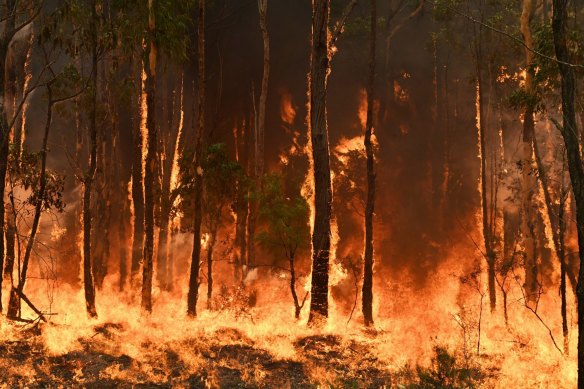BAL Report Principles: Essential Details for Homeowner
Wiki Article
Just How BAL Record Impacts Bush Fire Protection Procedures
In the world of bush fire security, the Building Strike Level (BAL) report stands as an essential tool that dramatically affects the safety and durability of homes in fire-prone areas - BAL Report. The influence of a BAL evaluation extends much past simple documents; it serves as the cornerstone for establishing the proper construction requirements and fire protection actions necessary to mitigate the risks postured by bushfires. As neighborhoods face significantly extreme fire periods, understanding just how the BAL report forms these protective procedures comes to be paramount for contractors, house owners, and policymakers alikeRecognizing the Bushfire Strike Level

Importance of BAL Record Assessment

In Addition, the BAL report assessment functions as a foundational step in complying with lawful obligations and needs connected to bushfire security. Neighborhood councils and authorities commonly mandate the entry of a BAL report as part of the preparation and structure authorization procedure to guarantee that residential or commercial properties are sufficiently protected versus bushfire threats. Failing to perform a complete BAL record evaluation can cause insufficient security actions, leaving residential properties vulnerable to devastating bushfire incidents.
Building And Construction Standards Based on BAL
A comprehensive understanding of the Bushfire Strike Degree (BAL) allows building proprietors to apply building and construction standards tailored to their particular threat profile. Building and look these up construction criteria based on BAL are critical in alleviating the influence of bushfires on buildings. The BAL rating categorizes the prospective danger a residential property faces during a bushfire on a range from BAL-Low to BAL-FZ (Fire Area)Applying Fire Defense Steps
With the foundation of building and construction standards based on Bushfire Assault Degree (BAL) in area, the focus now moves towards the sensible execution of fire defense procedures to fortify residential properties against bushfire hazards. Executing fire defense measures includes a combination of passive and energetic techniques to enhance the strength of structures in bushfire-prone areas. Easy steps include utilizing fire-resistant structure products, mounting ash guards on vents, sealing gaps in walls and roof coverings, and preserving a clear room around the property cost-free from combustible greenery. Energetic procedures encompass having firefighting tools conveniently offered, such as hoses and water pumps, in addition to creating a defendable room around the property by getting rid of plant life and having a well-kept yard. Additionally, creating a discharge plan and guaranteeing all homeowners understand emergency procedures are critical parts of reliable fire defense steps. By integrating both passive and active strategies, residential properties can significantly reduce their vulnerability to bushfire events and raise the security of residents.Shielding Houses Versus Bushfires
Effectively securing homes versus the harmful impacts of bushfires needs a positive and thorough approach to fire security actions. Property owners living in bushfire-prone locations need to focus on the implementation of numerous methods to enhance their residential or commercial property's strength against wildfires. One essential facet is producing a defensible room around the home by maintaining a clear area free of flammable products. This includes consistently trimming plants, getting rid of dead plants, and guaranteeing a secure range between frameworks and trees. Installing fireproof roof covering products can also substantially minimize the threat of cinder strikes and straight fire contact. Furthermore, sealing vents and gaps to stop ash breach, along with incorporating fire-resistant doors and home windows, can aid strengthen the home's protection against bushfires. Buying a reliable water source, such as a well-kept sprinkler system or a devoted water tank, is vital for supplying water during fire emergencies - BAL Report. By embracing a positive position find out here now and integrating these safety steps, homeowners can dramatically boost their opportunities of protecting their homes go to this web-site versus bushfires.Final Thought
To conclude, the Bushfire Attack Degree (BAL) report plays an essential duty in determining the needed protection actions against bushfires. By assessing the BAL, building and construction requirements can be tailored to minimize the risks and make certain the security of homes in fire-prone areas. Applying fire security actions based on the BAL record is vital in safeguarding homes from possible bushfire dangers. It is important for home owners to focus on BAL evaluations and stick to recommended building and construction criteria to enhance bushfire resilience.In analyzing bushfire risk to residential properties, recognizing the Bushfire Attack Level (BAL) is an important part for implementing effective protection steps. Generally, a clear understanding of the Bushfire Strike Degree is essential for implementing sufficient protection procedures and minimizing the influence of bushfires on residential or commercial properties.

Report this wiki page